What is wood flooring?
Wood floors come in myriad shapes and sizes. The most common type of wood floor by far, though, is built from planks. Both solid wood and engineered hardwood floors are made from planks laid side-by-side. Wood flooring may also come in the form of parquet, or sheets of cork. We’ll get to those a bit further down the page.
For now, let’s look at the most common methods used to construct wood floors.
What types of wood flooring are there?
There are many ways to subdivide types of hardwood flooring. There’s the manner by which it’s built, the way it’s finished, the species of tree it was cut from… the sheer number of options available can be a bit overwhelming.
Let’s break things down a bit.
Solid hardwood vs. engineered hardwood
Solid hardwood
Solid hardwood is what probably comes to mind when you think of hardwood floors. These floors are made of planks cut from a single piece of wood. The top of each plank is finished by coating it with a protective layer of polyurethane or wax. Sometimes, the wood is also stained to alter its colour.
Solid hardwood planks can be purchased pre-finished or finished onsite after they’ve been installed. The boards have interlocking tongues and grooves running along their edges. These tongues and grooves snap together like Lego. The boards are then stapled or nailed to the subfloor.
Solid hardwood is robust. When properly installed and cared for, it can last as long as the house it sits in. There are heritage buildings over a century old that still have their original hardwood floors.
Here’s the downside:
The Achilles Heel of hardwood flooring is moisture.
In the National Post, contractor Mike Holmes writes, “The main problem with solid hardwood is that it shrinks and expands depending on the humidity in your home. In the winter when it’s drier, hardwood floors will shrink. When there’s more moisture in the air, like in the spring or summer, hardwood expands.”
Consequently, hardwood doesn’t do well below-grade (in a basement) or in a room where it’s likely to get wet (bathrooms and kitchens). If a hardwood floor experiences a flood, there’s a reasonable chance that it will need to be replaced.
Engineered hardwood
In contrast, Engineered hardwood is a thin layer (the wear layer) of hardwood on top of multiple layers of other wood (such as plywood or particle board). These layers are laminated together, with the grain direction alternating between each layer.
This construction method makes engineered wood more resistant to moisture. Holmes continues, “Engineered hardwood flooring isn’t affected by humidity as much as hardwood. It doesn’t shrink or expand, which makes it resistant to warping and cupping.”
The top layer of engineered wood is high-quality hardwood that’s been finished in the same manner as solid wood flooring. There’s no visible difference between engineered and solid wood flooring after they’ve been installed.
Engineered hardwood is installed the same way as solid hardwood. However, it also includes the option of a floating floor. “Floating” means the planks are locked together, but not fastened to the subfloor with nails, screws or adhesive.
Engineered wood, like solid wood, is sturdy. “It can also be sanded or refinished,” writes Holmes, “not as much as hardwood, but a few times over a couple decades is fine, depending on the quality.”
Contractor Tom Silva, of PBS’s This Old House, agrees. “Regardless of the species [of wood] you pick, you want to think about the thickness of the wear layer, or veneer. If the veneer is thick enough, you can sand it two or three times,” says Silva of engineered hardwood.

(Source)
Other types of wood flooring
In addition to the aforementioned types of wood floors, there’s also cork flooring and parquet flooring.
Like the cork in a bottle of wine, Cork flooring is made from the bark of the cork oak tree. It’s easy to install and maintain, and offers great insulation from heat and sound. It’s very soft, however, and heavy furniture can leave permanent indentations.
Parquet flooring features numerous small wood pieces laid in patterns, such as herringbone or chevron. It’s a great look if you dig the classical vibe. Parquet is easy to install, but can’t be re-finished the way a solid wood floor can.
Surface textures
Both primary construction methods come with different options for the surface texture. There are four common textures seen in hardwood floors for homes:
Hand-scraped boards have an almost wave-like texture. They add depth to the look of the floor, and can help hide scratches and blemishes.
Wire-brushed flooring features a more uniform look while still adding depth. Even more so than hand-scraped floors, wire-brushed wood hides surface damage.
Smooth wood floors are just that: smooth. They don’t feature any surface texture. The smooth option is great when you want to highlight the wood grain pattern of your floor.
Distressed floors give a home the rustic feeling. They feature an irregular texture that mimics that of old, well-worn wood floors.
Wood species
Nearly any type of wood can be milled into floorboards. Different species of tree feature different grain patterns and colours. Matching your floor to your decor is one thing to think about. There is, of course, also the price difference to consider; imported Brazilian cherrywood is a touch more expensive than locally-produced poplar. And finally, one of the biggest differences between different species is the hardness.
Wood hardness is measured using the Janka hardness test. The test measures how much force is required to push a steel ball halfway into the wood. The higher the Janka number, the harder the wood. When it comes to floors, harder wood is more resistant to damage from furniture, pets, or accidents. It’s also usually more expensive.
Here’s a rundown of 19 of the most popular wood species for floors, organized from hardest to softest:
|
Sample
|
Species
|
Janka value (lbf)
|
Notes
|
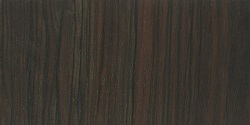
|
Ebony
|
3,220
|
Hard, heavy, and strong. Expensive and unsustainable (many species of Ebony are endangered), so rarely used anymore.
|
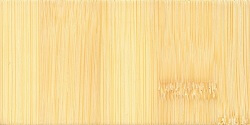
|
Bamboo, strand-woven
|
3,000
|
Not technically wood, but highly durable and eco-friendly.
|

|
Brazilian cherry
|
2,350
|
Deep reddish colour. Expensive.
|
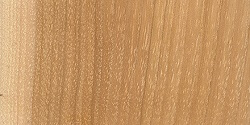
|
Hickory
|
1,820
|
Straight grains with a variety of colours.
|

|
Pine, red
|
1,630
|
Reddish colour, classic look.
|
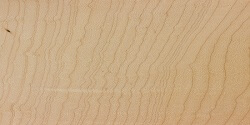
|
Maple, sugar
|
1,450
|
Light colour, dark grain lines. Modern look.
|

|
White oak
|
1,360
|
Brown with dark grain lines. Traditional look.
|

|
Ash
|
1,320
|
Bright and strong, but pricey.
|
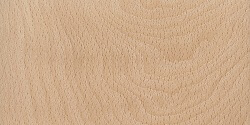
|
Beech
|
1,300
|
Light colour. Durable.
|
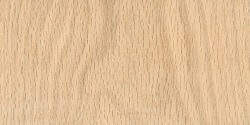
|
Red oak
|
1,290
|
Brown/pinkish colour. Traditional look.
|

|
Teak
|
1,155
|
Dark colour with a natural sheen. Often harvested illegally, so only buy FSC-certified Teak.
|

|
Walnut
|
1,010
|
Brown colour, but lightens with age.
|
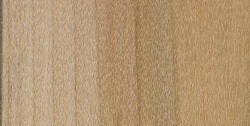
|
Maple, red
|
950
|
Deep red colour.
|
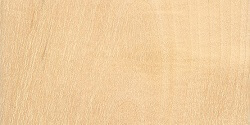
|
Birch
|
910
|
Light colour, light grain lines. Modern look.
|
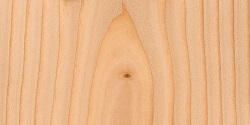
|
Fir
|
660
|
Light in colour, good dimensional stability.
|

|
Alder
|
590
|
Uniform colour with a rustic feel.
|

|
Poplar
|
540
|
Cheap, but soft. Good for engineered hardwood.
|

|
Pine, western white
|
420
|
Affordable, ages well.
|
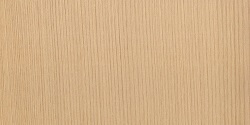
|
Cedar, western red
|
350
|
Beautiful red colour. Very soft.
|
|
Sample
|
Species
|
Janka value (lbf)
|
Notes
|
What should you do when something goes wrong?
Fading or peeling finish
Some finishes are meant to be glossy. When the sheen starts to fade – and a good cleaning doesn’t bring it back – it’s probably time to refinish.
Oil-based finishes will naturally turn yellow over time. Some people desire the yellowed look, but you’ll have to refinish the floor if you prefer your wood’s natural hue.
Peeling is a sign that the finish wasn’t applied properly. It usually means the floor was dirty when the finish was applied. Unfortunately, there’s not much you can do except sand and refinish the whole floor. If the peeling is limited to one or two small areas, you might be able to get away with spot repairs.
Buckling, peaking, gapping, and other deformation
Buckling or peaking means the wood has started pulling away from the subfloor in places, forming peaks or heaves. This is one of the most severe deformation problems. It’s a sign of moisture issues. If a floor was installed without enough room for the wood to expand around the edges, the boards may begin to buckle in humid conditions. Severe peaking can result from large spills or flooding, when the water isn’t cleaned and dried quickly enough. The solution is to first solve the moisture problems, then tear up and replace the affected boards (leaving enough room for them to expand).
Gapping means that empty spaces are starting to form between your floorboards. If the wood was too damp when it was installed, it may shrink and form gaps when the climate gets dry. If the gaps are small enough that they don’t bother you, you’re safe to wait for a more humid season to see if they close up. Otherwise, you can fill the gaps with wood glue and thin strips cut from spare floorboards. Make sure to fill gaps during the humid season while the boards are in their expanded state.
Cupping means that individual boards have started to curve up at their edges. This becomes more common the wider the boards are. Cupping is caused by moisture underneath the floor. If the cupping isn’t too severe, it’s possible to sand the upturned edges down and refinish the floor. Make sure to fix the underlying moisture issue, though, or the problem will return. You may have to tear up the whole floor and install a moisture barrier layer underneath.
Mould and mildew
If mould is starting to grow on your hardwood floors, moisture is usually the culprit. When the mould only affects the surface, it’s easy enough to deal with. Soak a towel or rag with a diluted vinegar or bleach mixture, then wring it out until it’s damp. Place the towel over the mouldy area, and let it sit for 10 minutes. Then, wipe away the mould and dry the area thoroughly.
If your mould goes deeper, you can try sanding down the affected area and re-finishing it. This can be tricky, since it’s hard to match the new finish to the existing finish surrounding it.
For severe mould problems, you may need to replace entire planks. You can also hire a mould removal specialist.
Stains
We’re not talking about the intentional staining that gives the floor its colour. How do you rid your hardwood floors of stains from pet urine, standing water, or other liquids?
Catch spills quickly, and it’s as simple as wiping them away. Scrub the area gently with a soft cloth and some detergent if necessary. The finish layer should keep fluids from penetrating the surface, at least for a little while.
If you’ve got an actual stain on your hands, soak a rag in a diluted cleaning agent (vinegar, hydrogen peroxide, etc.) and wring it out until it’s damp. Place the rag over the stain, and let it sit for up to 24 hours. Then, wipe away the cleaner. Hopefully, the stain goes with it.
This is important to note:
Not every cleaner plays nice with every type of finish. If you’re not sure which cleaner to use, consult the manufacturer’s instructions for your floor’s finish.
If the stain is still being stubborn, you may have no choice but to sand the area down and refinish it. If you take this route, consider doing a trial run somewhere out of sight (like a closet) to make sure that your new finish will match the existing finish.






















